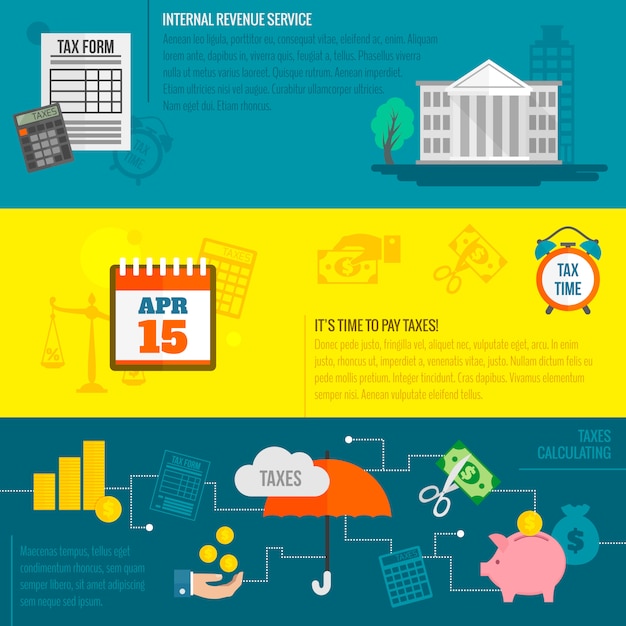New IRS Rules for 2025: Understand the Impact on Your Tax Refund

New IRS rule changes for 2025 focus on adjustments to tax brackets, standard deductions, and credits, potentially impacting the size of your tax refund and overall tax liability; understanding these changes is crucial for effective financial planning.
Navigating tax season can be complex, and staying informed about the latest changes is essential for maximizing your refund. New IRS rule changes for 2025: How They Impact Your Tax Refund is a topic that every taxpayer in the US should be aware of. Let’s dive into these adjustments and see how they might affect your financial situation.
Understanding the Key Changes in IRS Rules for 2025
The IRS regularly updates its rules and regulations to reflect economic changes, inflation, and legislative updates. These modifications can significantly impact the amount of taxes you owe or the size of your refund. Staying abreast of these changes ensures you remain compliant and can optimize your tax strategy for the upcoming year.
Inflation Adjustments
One of the primary drivers of annual IRS rule changes is inflation. Adjustments are made to various thresholds and amounts to prevent taxpayers from being unfairly penalized due to the rising cost of living. For example, tax brackets, standard deductions, and certain credit amounts are often adjusted to maintain their real value.
Legislative Updates
New tax laws enacted by Congress can also lead to significant changes in IRS rules. These legislative updates may introduce new tax credits, deductions, or alter existing provisions. Keeping an eye on legislative developments can provide insights into potential tax planning opportunities.

Here are some of the key areas where you might see changes in 2025:
- Tax brackets: Adjusted income thresholds for different tax rates.
- Standard deduction: The base amount that all taxpayers can deduct, regardless of itemized deductions.
- Earned Income Tax Credit (EITC): Income thresholds and credit amounts.
- Child Tax Credit (CTC): Credit amounts and eligibility criteria.
Understanding these changes is crucial for accurate tax planning and maximizing potential refunds.
Impact on Tax Brackets
Tax brackets determine the rate at which your income is taxed. These brackets are usually adjusted annually to account for inflation, preventing “bracket creep,” where inflation pushes you into a higher tax bracket even if your real income hasn’t increased.
How Tax Brackets Work
The US tax system uses a progressive tax structure, meaning that different portions of your income are taxed at different rates. For example, the first portion of your income might be taxed at 10%, while a subsequent portion is taxed at 12%, and so on. The specific income thresholds for each bracket are adjusted each year.
Potential Changes in 2025
For 2025, expect to see adjustments to the income thresholds for each tax bracket. These changes could affect how much tax you owe, depending on your income level. For instance, if the income threshold for the 22% tax bracket increases, you might find that more of your income is taxed at a lower rate.

Consider these scenarios to understand the impact of tax bracket adjustments:
- Scenario 1: If your income remains the same, but the tax bracket thresholds increase, you might owe less in taxes.
- Scenario 2: If your income increases and pushes you into a higher tax bracket, you could owe more in taxes, though only the portion of your income that falls into the higher bracket is taxed at that rate.
- Scenario 3: If your income decreases, but the tax bracket thresholds remain the same, your tax liability could decrease.
Staying informed about these bracket adjustments can help you forecast your tax liability accurately and plan accordingly.
Changes to Standard Deduction
The standard deduction is a fixed dollar amount that reduces your taxable income. It serves as an alternative to itemizing deductions, such as mortgage interest, state and local taxes (SALT), and charitable contributions. The standard deduction is also typically adjusted annually for inflation.
Understanding the Standard Deduction
The standard deduction is available to all taxpayers, but the amount varies based on filing status (single, married filing jointly, head of household, etc.). Some taxpayers may choose to itemize deductions if their total itemized deductions exceed the standard deduction amount.
Expected Adjustments for 2025
In 2025, keep an eye on potential increases to the standard deduction amounts. These increases could result in lower taxable income, which could reduce your overall tax liability. For example, if the standard deduction for single filers increases, more of your income will be shielded from taxation.
Here’s how the standard deduction can impact different taxpayers:
- Taxpayer A: A single filer who doesn’t itemize may benefit from an increased standard deduction, reducing their taxable income.
- Taxpayer B: A married couple filing jointly may also see a reduced tax liability due to an increase in their standard deduction.
- Taxpayer C: A taxpayer who itemizes deductions will need to compare their itemized deductions to the standard deduction to determine which methodresults in a lower tax liability.
Understanding and utilizing the standard deduction effectively can help lower your tax bill.
Modifications to Tax Credits
Tax credits are direct reductions in your tax liability, making them a valuable tool for reducing the amount of taxes you owe. Several tax credits are available, each with its own eligibility criteria and rules. Changes to these credits can have a significant impact on your tax refund.
Popular Tax Credits
Some of the most popular tax credits include the Earned Income Tax Credit (EITC), the Child Tax Credit (CTC), and the American Opportunity Tax Credit (AOTC). These credits are designed to provide financial assistance to low- to moderate-income individuals and families.
Potential Credit Adjustments in 2025
For 2025, be aware of potential changes to the income thresholds, credit amounts, and eligibility rules for various tax credits. For example, the EITC might see adjustments to the income limits for claiming the credit, while the CTC could undergo changes in the maximum credit amount per child.
Consider these scenarios to see how changes to tax credits might impact your tax refund:
- The EITC: Changes in income thresholds might allow more low-income taxpayers to qualify for the credit, increasing their refunds.
- The CTC: Adjustments to the maximum credit amount could provide additional financial relief for families with children.
- The AOTC: Modifications to eligibility rules might allow more students and families to claim the credit for qualified education expenses.
Carefully review the eligibility criteria and rules for each tax credit to ensure you are taking full advantage of all available benefits.
How These Changes Affect Your Tax Refund
The interplay between tax brackets, standard deductions, and tax credits determines the overall impact on your tax refund. By understanding how these elements work together, you can better estimate your tax liability and plan accordingly.
Estimating Your Tax Refund
To estimate your tax refund for 2025, start by projecting your income for the year. Then, consider any adjustments to income, such as contributions to retirement accounts or health savings accounts (HSAs). Next, determine whether to take the standard deduction or itemize deductions.
Using Tax Planning Tools
Several tax planning tools and resources are available to help you estimate your tax liability and refund. The IRS offers various calculators and publications on its website, and many tax software programs include forecasting features.
Here are some steps you can take to estimate your tax refund:
- Gather your financial documents: W-2 forms, 1099 forms, and records of any deductions or credits.
- Use a tax calculator: Input your information into a tax calculator to estimate your tax liability.
- Review your withholding: Ensure that your withholding from your paycheck is sufficient to cover your estimated tax liability.
By taking these steps, you can gain a better understanding of your tax situation and plan accordingly.
Strategies for Adapting to the New Rules
Adapting to new IRS rules requires proactive planning and informed decision-making. By staying aware of the changes and making necessary adjustments to your financial strategy, you can minimize your tax liability and maximize your refund.
Adjusting Your Withholding
One of the most effective strategies for adapting to new tax rules is to adjust your withholding from your paycheck. By increasing or decreasing your withholding, you can better align your tax payments with your estimated tax liability for the year.
Maximizing Deductions and Credits
Another strategy is to maximize your deductions and credits. Take advantage of all available deductions, such as contributions to retirement accounts, student loan interest payments, and health savings account contributions. Also, ensure that you are claiming all eligible tax credits, such as the Earned Income Tax Credit and the Child Tax Credit.
Adjusting your financial strategy to align with new tax rules can involve these actions:
- Consulting a tax professional: Seek guidance from a qualified tax advisor to navigate complex tax rules.
- Reviewing your investment strategy: Consider tax-advantaged investment options to minimize your tax liability.
- Keeping detailed records: Maintain accurate records of all income, expenses, and deductions to support your tax filings.
By implementing these strategies, you can effectively adapt to the new IRS rules and optimize your tax outcomes.
| Key Point | Brief Description |
|---|---|
| 💰 Tax Brackets | Adjusted income thresholds for different tax rates. |
| 🧾 Standard Deduction | Increased amounts can reduce taxable income. |
| 👶 Child Tax Credit | Changes in eligibility and credit amounts. |
| 💼 Earned Income Tax Credit | Income threshold adjustments for low-income filers. |
Frequently Asked Questions (FAQ)
▼
The major changes often include adjustments to tax brackets, standard deductions, and various tax credits to account for inflation and legislative updates, potentially affecting tax liabilities and refunds.
▼
Adjustments to tax brackets could mean that more or less of your income is taxed at different rates, depending on whether the thresholds increase or decrease for each bracket.
▼
The standard deduction is a fixed amount that reduces your taxable income. In 2025, it’s likely to increase to account for inflation, which could lower your tax liability.
▼
Use tax planning tools, gather your financial documents, and consider adjustments to your income and deductions. Online tax calculators and IRS resources can also provide valuable insights.
▼
Adjust your withholding, maximize deductions and credits, consult a tax professional, and keep detailed records to adapt effectively to the new IRS rules and optimize your tax outcomes.
Conclusion
Staying informed about the new IRS rule changes for 2025 is crucial for effective tax planning and maximizing your refund. By understanding the impact of adjustments to tax brackets, standard deductions, and tax credits, you can make informed decisions to optimize your financial strategy.
